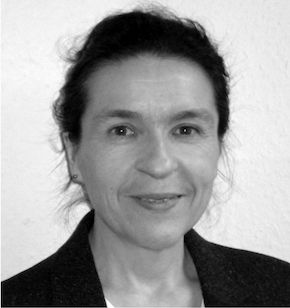Christiane Clados is Research Associate at the Department of Social and Cultural Anthropology at Philipps University Marburg where she has been teaching since 2012.
She completed her Habilitation at Philipps University and her doctorate at Free University Berlin. Her research interests lie in the areas of visual studies, ranging from theory to methods of analysis. Her work focuses specifically on graphic pluralism of the Americas, with particular emphasis on visual anthropology, art history and graphic communication systems of the Central Andes and Isthmo-Colombian Area. She has collaborated actively with researchers in specific disciplines of archaeology, museology and digital heritage.
Contact: clados@staff.uni-marburg.de
Academia.edu: https://uni-marburg.academia.edu/ChristianeClados
ResearchGate: https://www.researchgate.net/profile/Christiane_Clados
List of publications:
- In progress The Depiction of Feathers in the Prehispanic Central Andes, Baessler-Archiv.
- In progress “Gender Change” of a pre-Columbian Mummy (working title), Archaeology, Heritage, and Gender.
- In press Digital 3D Reconstruction and Simulation of Fragmentary Preserved Museum Objects: An Tiwanaku Incense Burner of the Ethnologisches Museum Berlin, Baessler-Archiv, Ethnologisches Museum Berlin.
- 2020 3D-Rekonstruktion und kulturelle Objekte (3D Reconstruction and Cultural Objects), Based On Trust – Cultural Heritage in Virtual Environments. Proceedings der EVA Konferenz 2019.
- 2020 Sacred Landscapes Represented: Cave symbolism in Southern Central Andean Iconographies, Poster, 60th Annual Meeting, Institute of Andean Studies, Berkeley.
- 2019 “On the Iconic Nature of Tocapus” in Mikulska, K., Offner, J. (eds.) Indigenous Graphic Communication Systems: A Theoretical Approach. University Press of Colorado: 233-256.
- 2019 Borrowed from the Ancestors: Tiwanaku and Wari Motifs in Inca Tocapus. Baessler-Archiv, 65: 35-50.
- 2019 “The Golden Ones – The Human Body as Reflective Metallic Surface in the Isthmo-Colombian Area” in Halbmayer E. (ed.) Amerindian Socio-Cosmologies Between The Andes, Amazonia And Mesoamerica, Routledge: 158-178.
- 2019 with Halbmayer E., “Between Mesoamerica, the Central Andes, and Amazonia: area conceptions, chronologies, and history” in Halbmayer E. (ed.) Amerindian Socio-Cosmologies Between The Andes, Amazonia And Mesoamerica, Routledge: 123-157.
- 2015 “Pre-Hispanic Graffiti and Social Organization in Peru. Materialized visual practices in the public urban space” in Youkhana, E. and Förster, L. (eds.) Grafficity. Visual Practices and Conclusions in Urban Space, DFG-Exzellenzcluster: 55-84.2014 “Beyond Music: Non-Musical Uses of Music Instruments in Paracas and Nasca Iconography” Flower World, 3:169–185.
- 2013 with Teufel S., The divine heart of things. Precolumbian art from the Ludwig Collection, Catalogue, Rautenstrauch-Joest-Museum Cologne.
- 2013 “Die Inka, Tocapu und Visuelle Kommunikation (The Inca, Tocapu, and Visual Communication)” in Kurella, D. and de Castro, I. (eds.) Inka. Kőnige der Anden (Inca. Kings of the Andes). Katalog zur gleichnamigen Ausstellung. Linden-Museum Stuttgart: 80-84.
- 2012 Speicherchip der Vergangenheit (Memory Chips of the Past). Dresden Summer School. Von der Vitrine zum Web 2.0.
- 2012 Tocapu Drawings Database Project (TDDP), German Research Foundation (DFG): online database on Tocapu symbols, Peru, 784 tiles inclusive object description, 50 pages text, all drawings done by the author, June: www.tocapu.org
- 2010 Nasca Drawings Collection. Online Archive. FAMSI Resources, 403 tiles, all drawings done by the author: http://research.famsi.org/nazca/index.html
- 2009 “New Perspectives on Tiwanaku Iconography” in Young-Sánchez, M. (ed.) Papers from the 2005 Mayer Center Symposium at the Denver Art Museum, Denver Art Museum: 101-114.
- 2007 A Key Checkerboard Pattern Tunic of the Linden-Museum Stuttgart: First Steps in Breaking the Tocapu Code? Tribus, 56: 71-106.
- 2007 Nasca Geoglyphs. Amerindian Research, 2(4): 5-14.2006 Artistic Conventions in Nasca Iconography. Dresdner Kartographische Schriften, Hochschule für Technik und Wirtschaft Dresden: 141-152.
- 2006 Neue Erkenntnisse zur Ikonographie der Geoglyphen von Nazca (New insights into the iconography of the geoglyphs of Nazca). Ethnographisch-Archäologische Zeitschrift (EAZ), 47(3): 299-324.
- 2005 Die Sicán-Kultur (Sican Culture). Co-author K. Koschmieder. Sicán – Schätze der Anden (Treasures of the Andes), 37: 272-293.
- 2005 Maisfeld, Affe und Opfertod: Ein spät nasca zeitliches Textil des Linden-Museums Stuttgart (Cornfield, Monkey and Sacrificial Death: A Late Nazca textile from the Linden Museum). Tribus, 54: 71-88.
- 2005 Augenblicke. Die Moche – Keramik: Menschen, Götter und Symbole (Moments. Moche ceramics: people, gods and symbols). Exhibition Catalogue. Museum of World Cultures, Bd. 14, 18. Juni 2005 – 29. Mai 2006, Frankfurt, Galerie 37.
- 2001 Die “unbekleidete Frau” von Nasca. Baessler-Archiv. Beiträge zur Völkerkunde, Neue Folge Band LXXIII (Heft 1): 26-42.


